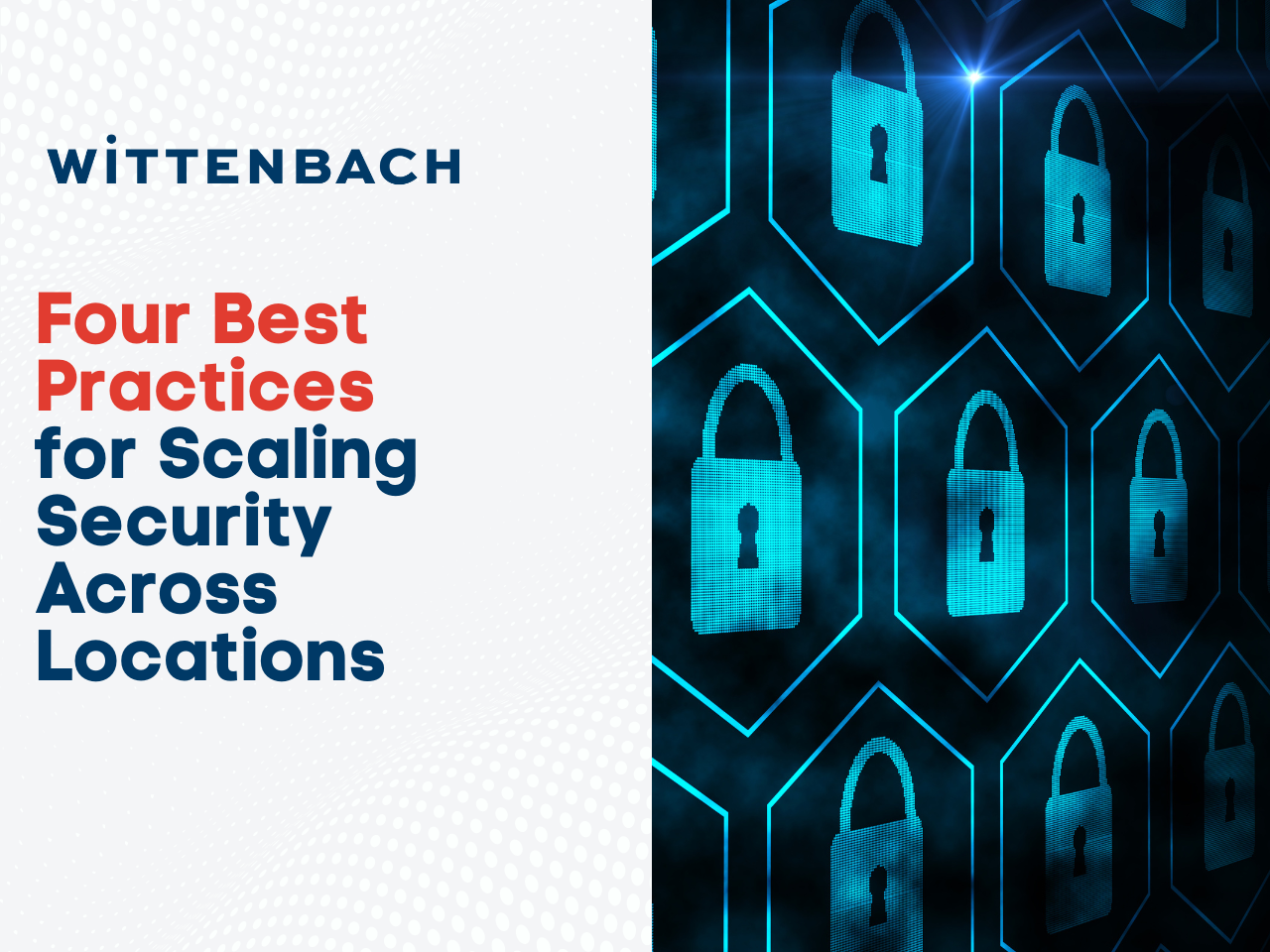The process of scaling security technology across several locations can be an exciting effort, as it heralds the expanse of and investment into your business’ physical footprint. Whether you are building new locations or upgrading the security measures within existing ones, a well-planned scaling process can ensure several benefits: a faster return on your investment, employee adoption of new technology, cost savings by leveraging economies of scale, and efficiencies across your organization.
At Wittenbach, our foundational pillars of physical security and electronic security spans across industries to serve warehouses, retail shops, schools, hospitals, venues, government buildings, and financial institutions. Below, we will provide guidance on how to eliminate vulnerabilities and seamlessly scale your security efforts to match the requirements of the facilities, personnel, clients, and valuables housed within.
Understanding common commercial security vulnerabilities
When considering products to outfit numerous locations, your organization must understand the unique security threats they face. We will address several commercial settings with unique security risks and needs, but the opportunity to upgrade and scale security technology is not limited to these industries alone.
- Retail industry: Theft is the main security risk in the retail sector, as shoplifting and burglary are perennial threats. In the U.S. alone, sources estimate the costs of shoplifting between a staggering $69-94 billion annually. Installing electronic security systems, such as a Network Video Recorder (NVR) system, can keep an eye on your stores from any angle; Internet Protocol (IP) cameras can be mounted in virtually any location. Footage from each camera can upload to the same cloud-based server, so that a centrally located IT professional can monitor all locations, instead of having to be on-site at each store to review.
- Financial sector: Burglary, robbery, and vandalism to buildings and ATM units are common issues at banks and credit unions. Installing an NVR system, such as the Verint EdgeVR 300, can cover both the inside and outside of your branches, deter, and detect these crimes, using the high-resolution footage to aid law enforcement in the event of a breach. Internal theft is also a physical security risk at financial institutions, since employees have access to significant amounts of cash and valuables. Installing safe and vault locks such as the Kaba Mas Auditcon 2 Series or LA GARD 700 Series offers time delay functionality and allows you to centrally manage those who have access, and when.
- Government buildings: Unauthorized intrusion is a common threat in government buildings, where officials, biometrics, cell phone activity, and other sensitive information, commonly sit. Turnstiles are an easy-to-install means to control the flow of foot traffic; employees can use a key fob or card to swipe into the turnstile, whose data on entries and exits is then auditable to track access trends. Entrance security vestibules are another means of preventing unauthorized access to government buildings; they require one person at a time to enter, offer metal detection scanning, and can prevent firearms and other hazardous items from crossing the threshold.
- Medical complexes: PatrolPoints advises that the largest physical threat to healthcare workers is aggravated assault, as they are four to five times more likely than average to experience it. While many assaults by patients may be unintentional, NVR systems can provide context to those occurrences and supplement the security staff’s efforts to keep both staff and patients safe. Hospitals and medical offices are also large repositories of sensitive laboratories, patient records, and controlled substances. Products offered by Wittenbach’s strategic partner, dormakaba, include a suite of hospital-oriented door locks and entry systems that can ensure appropriate security from intruders and prying eyes.
- Warehouses and factories: The largest physical threat to these types of facilities is unintended entry. Decentralized access control can wreak havoc on your buildings’ security, as user management can be difficult, especially when workers leave, change roles, or lose their access key. Wittenbach partner Honeywell offers access control systems that can be scaled and monitored across locations, and the DMP Virtual Keypad can read access credentials from virtually any device. Instantly, you have a grasp on access across all of your locations, and can update roles or users without worrying about unauthorized entry.
Four methods to scale security technology across your locations
1. Depending on the scope and type of new security system implemented, you may need to hire additional staff to operate and maintain it. All employees operating or interacting with the new security functionality should be trained how to correctly use it. In a recent blog post, we explained how to steer employee training towards information retention and relevance to each person’s individual job duties: “Providing context as part of the greater whole of your branch is useful, but over-informing them of new technology can be overwhelming and decrease retention of the details that are critical to their own job performance.”
2. When purchasing new physical or electronic security systems across geographies, consider the costs and potential economies of scale that you can unlock when purchasing multiple sets of equipment. In an era in which the costs for nearly everything are rising, consider this method of possible cost reduction per unit by purchasing a larger quantity of security technology at the same time.
3. Consider purchasing security products with cross-geographical capabilities. This means not only rolling out new security equipment to multiple locations, but finding ways to manage them centrally, consolidating time and employee hours. Remotely managing an access control system, collecting video surveillance data on a cloud-based server, auditing building and safe entry attempts in one report, and managing system users without needing to be on-site are all ways that your business can achieve efficiency once your scale increases.
4. Formalizing a company-wide security policy will standardize who may use and maintain physical and electronic security systems, when this may occur, and how each feature should be operated. Villanova University explains, “The first step […] is conducting a risk assessment to identify vulnerabilities and areas of concern. An effective policy will use information discovered during the assessment to explain its purpose, define the policy scope, indicate responsible individuals and departments, and include a method of measuring compliance.”
Physical and electronic security systems and measures can protect your business, and scaling those efforts across locations can protect your investment in them. Lean on Wittenbach’s seasoned experts to help you select, install, and maintain commercial security products. We will help you optimize their longevity and adhere to a carefully crafted security policy, giving your organization peace of mind.





